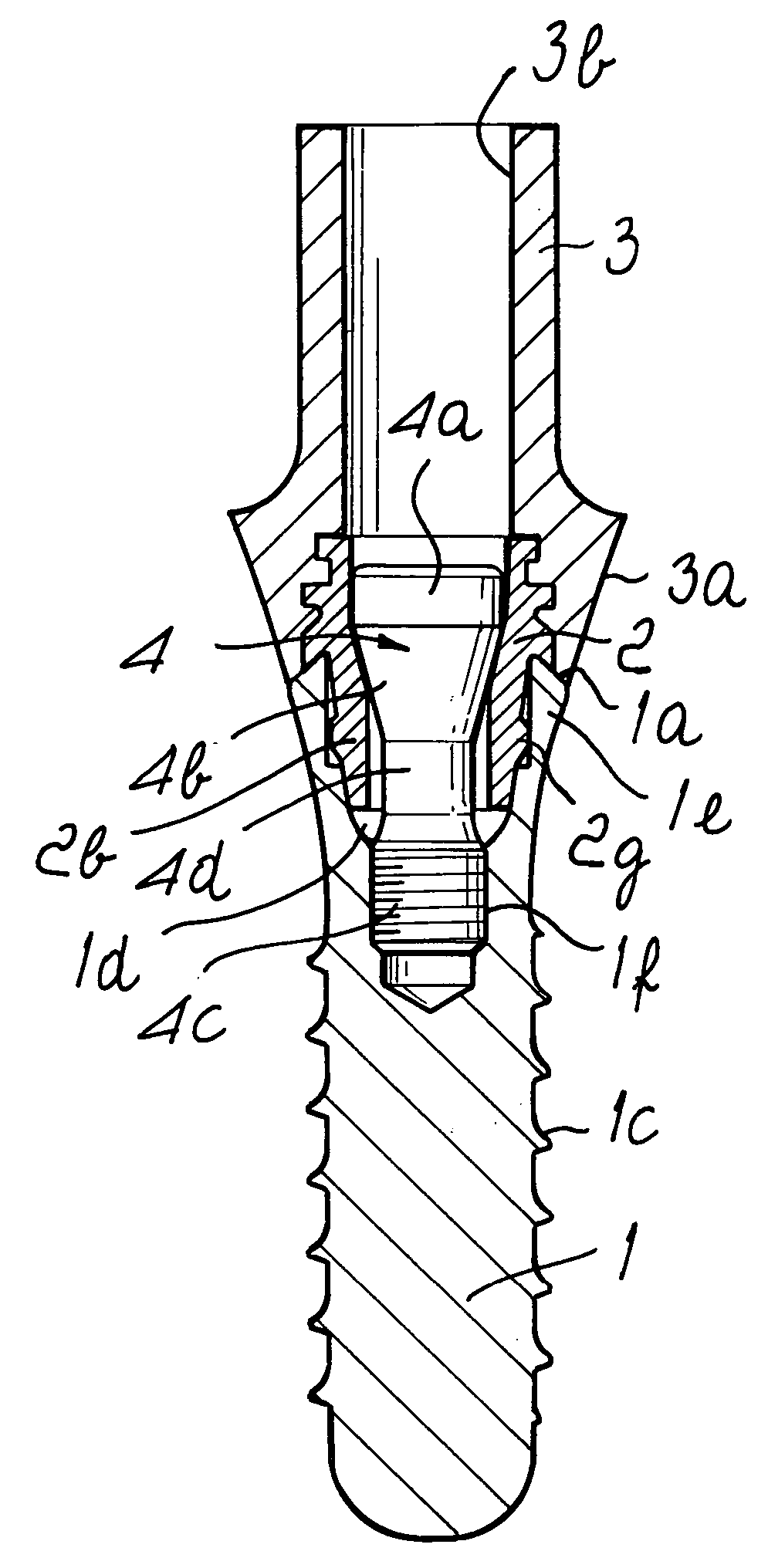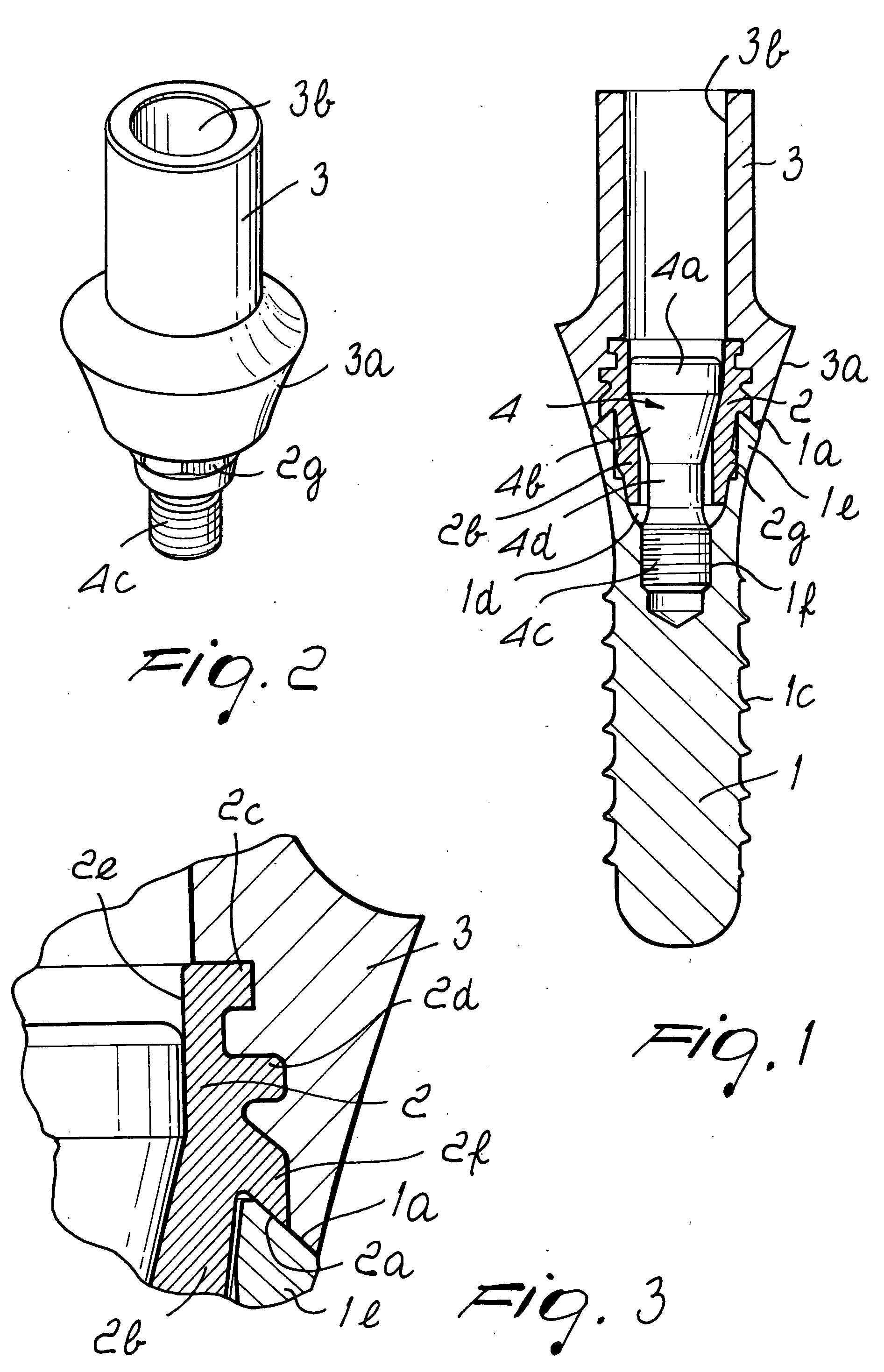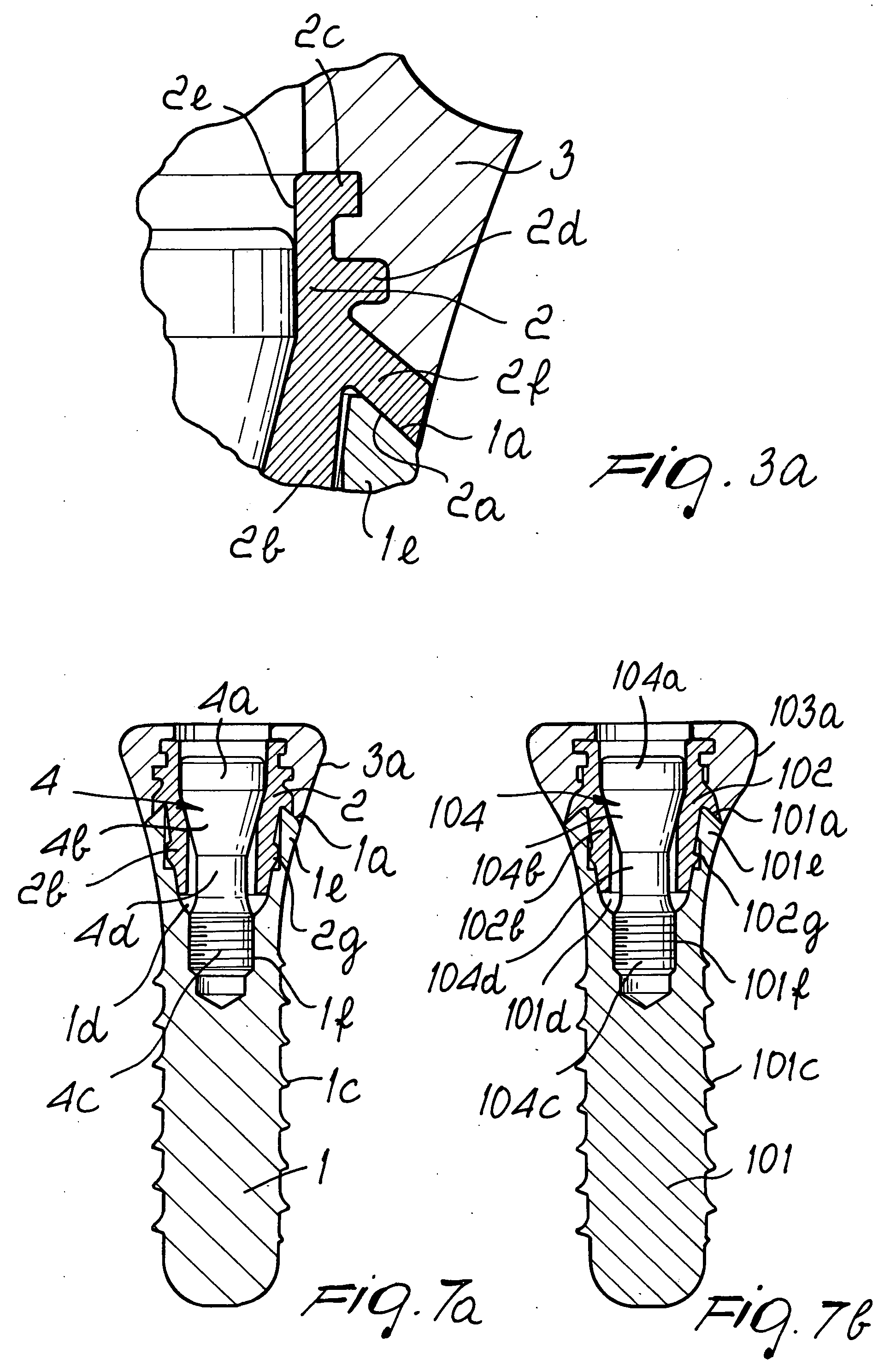Dental implant system
a dental implant and implant technology, applied in dentistry, dental prosthetics, medical science, etc., can solve the problems of unsatisfactory coupling, unreliable and not steady, and several technical problems, and achieve the effect of reducing or eliminating the drawbacks of known dental implant systems
- Summary
- Abstract
- Description
- Claims
- Application Information
AI Technical Summary
Benefits of technology
Problems solved by technology
Method used
Image
Examples
first embodiment
[0036]FIG. 3a is a variation of FIG. 1 where the inlay 2 is visible laterally in the assembled state of the implant system. This variation may be used in a biologically non-aggressive environment and provides for an even further improved force distribution as the contacting surface between the inlay and the dental implant is maximized. Otherwise all details of FIG. 3a are identical to FIG. 1 and will therefore be omitted.
[0037] Also FIG. 7a is a variation of the first embodiment of FIG. 1 implemented as a healing abutment. Otherwise, again, all details of FIG. 7a are identical to FIG. 1 and will therefore be omitted. The healing abutment may be manufactured to be smaller sized as shown in FIG. 7a or may be processed in situ by the dental technician or dental surgeon from a larger sized abutment to a smaller size.
second embodiment
[0038] FIGS. 4 to 6 show the implant system according to the present invention, wherein generally the single parts are corresponding to those of FIGS. 1 to 3 and therefore the detailed description thereof has been omitted. It is noted that the reference numerals are augmented by 100 as compared to FIGS. 1 to 3.
[0039] Varying from FIGS. 1 to 3, FIG. 6 shows that the inlay 102 could have different profiles in order to improve the stability of the interfaces inlay-abutment and inlay-dental implant. In particular, in this second embodiment, the inlay 102 has a downward-facing shoulder 102f, which entirely overlaps the upper surface 101a of the neck portion 101e of the implant 101. The cross-sectional view of FIG. 6 shows the tapered shape of the shoulder 102f.
[0040] As above mentioned, the presence of the integral inlay 102 interposed between the abutment 103 and the dental implant 101 enforces the whole construction of the implant system and serves for a better force distribution as w...
PUM
 Login to View More
Login to View More Abstract
Description
Claims
Application Information
 Login to View More
Login to View More - R&D
- Intellectual Property
- Life Sciences
- Materials
- Tech Scout
- Unparalleled Data Quality
- Higher Quality Content
- 60% Fewer Hallucinations
Browse by: Latest US Patents, China's latest patents, Technical Efficacy Thesaurus, Application Domain, Technology Topic, Popular Technical Reports.
© 2025 PatSnap. All rights reserved.Legal|Privacy policy|Modern Slavery Act Transparency Statement|Sitemap|About US| Contact US: help@patsnap.com



